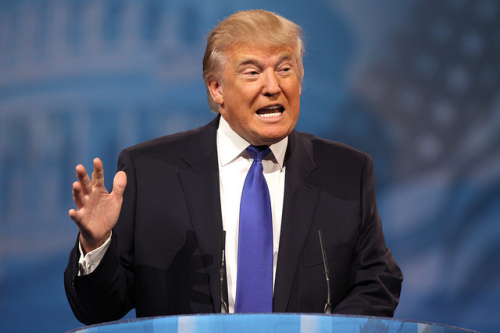Presidential nomineee Donald J. Trump recently revealed a new plan touted on Trump’s campaign website as “child care reforms that will make America great again” and is described by Ivanka Trump in Cosmopolitan magazine as a “very comprehensive and really revolutionary plan to deal with a lot of issues.”
While the plan is a step in the rigiht direction, it is far from being revolutionary, especially when it comes to paid family leave. The plan offers maternity leave, but it does not offer paternity leave. Simply put, it is not progressive enough.
This is unsurprising. Trump and his ticket-mate Mike Pence, both have a record of being less than progressive when it comes to family planning. In an Oct. 2004 interview with NBC’s “Dateline,” Trump said pregnancy is “a wonderful thing for the woman, it’s a wonderful thing for the husband, it’s certainly an inconvenience for a business. And whether people want to say that or not, the fact is it is an inconvenience for a person that is running a business.”
In a 1997 letter to the editor of the Indianapolis Star, Pence shamed working parents by saying that children who go to daycare “get the short end of the emotional stick.” He argued that the tax code should be more favorable to families where one parent stays home with children. In addition, Pence did not back proposed paid leave laws in 2008 and 2009 while serving in Congress.
While it would be reasonable to conclude these two men would not support major childcare reform from their track record, the proposed plan is an improvement over the current system of maternity leave. Trump’s proposed plan guarantees new mothers six weeks of paid leave and will offer tax credits for childcare — a step up from the current 12 weeks of unpaid leave new mothers currently face. The United States the only industrialized country that does not offer paid maternity leave.
Trump’s plan is notably flawed in that paid family leave is only offered to mothers. Only offering leave to mothers perpetuates the idea that mothers alone should be responsible for chilcare, a concept that has been perpetuated for longer than it should have been. It has set women back in their attempts to idenitfy as competent members of the workforce and more than just caretakers.
Child care should be a shared responsibility between two parents, regardless of whether both parents are working or not but arguably even more so when both parents are. If two working parents do not share responsibility within the first six weeks of a child’s life, the family is likely to begin habitually assigning certain caretaking roles to the person who originally performed them. Offering only maternity leave can set the stage for this imbalance.
Only offering paid maternity leave also can dissuade employers from hiring women of childbearing ages, placing an undue burden on women trying to enter the workforce or change jobs and thereby negatively affecting fathers and children as well. It is lastly important for both parents to develop a bond with their newborn child and settle into new life as a family.
There is a stigma around a father taking as much family leave as a mother, and it needs to be eradicated. A survey by Deloitte, a multinational professional services firm, found that “54 percent of survey respondents said they think their colleagues would judge a father who took the same amount of parental leave as a mother.” Changing governmental policy can be a step in the right direction in breaking this stigma.
Another issue with Trump’s childcare plan is that it only includes maternity leave for birth mothers, not including male same-sex couples or others who adopt or have a surrogate.
During a Cosmopolitan interview, Ivanka Trump was asked why the policy does not include a paternity leave, to which she said Ivanka said “…I think this takes huge advancement and obviously, for same-sex couples as well, there’s tremendous benefit here to enabling the mother to recover after childbirth. It’s critical for the health of the mother. It’s critical for bonding with the child, and that was a top focus of this plan.”
Later in the interview, when asked about gay couples where both partners are men, Ivanka said, “the policy is fleshed out online, so you can go see all the elements of it. But the original intention of the plan is to help mothers in recovery in the immediate aftermath of childbirth.”
This policy implies that it is less critical for males and non-birth mothers to bond with their children during early developmental stages.
Ultimately, Trump’s plan for family leave falls short in comparison to that of his opponent, Hillary Clinton. Her plan includes a guarantee of up to 12 weeks of paid family leave, which includes maternity leave, paternity leave and leave for parents who adopt. This is a much more inclusive plan and offers double the amount of leave that the Trump plan offers.
Overall, Trump’s child care plan is lacking when it comes to inclusivity and gender equality. It’s an improvement on current family leave legislation, but falls short when considering what Americans want and need.
Jaclyn Weiner, FCRH’18, is a communication and media studies major from Wantagh, New York.





